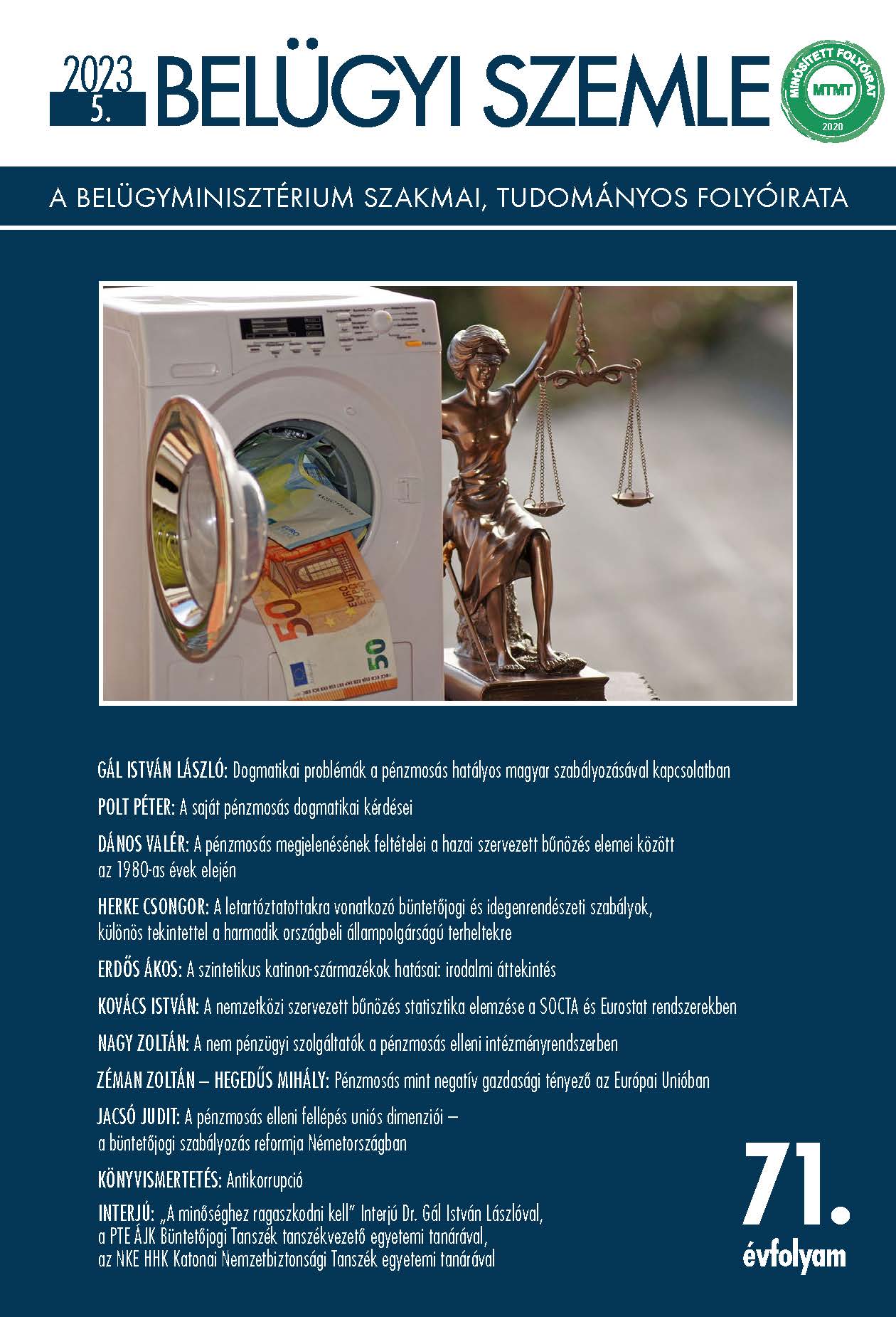Abstract
Aim: To show how organized crime came into being in Hungary in the 1980s, what social, economic and legal conditions made the evolution of organized crime possible, and the role of money laundering as a new form of crime during the period.
Methodology: A descriptive presentation of the author's Candidate's thesis defended in 1990 – an empirical study of money laundering, its themes and findings.
Findings: The model of the reasons for the emergence of organized crime in the country can be defined along four lines:
– Satisfying the demand for prohibited goods and services and for scarce goods requires a high degree of conspiracy and organization, which tends to create a specific criminal structure; the technical advantage and organizational superiority of criminals exploiting modern infrastructure, as opposed to an outdated, rigidly structured law enforcement, creates the preconditions for the relatively long-lasting and "risk-free" operation of criminal associations.
– The contradiction between the socially motivating end and the means to achieve it results in the socio-psychologically "justified" thesis that the criminal acquisition of wealth eliminates the wealth-social inequality that cannot be otherwise introduced.
– The inherent contradictions of the market economy, the additional dysfunctions resulting from the deficit economy, and the uncontrolled
operation of legal enterprises that allow the laundering of criminal wealth not only create the possibility but also directly encourage criminals to form criminal associations in the areas concerned, which ultimately constitute the objective – indirect and direct – inspirations of the economy.
– The rational perception of the link between changed socio-economic conditions and crime has led some criminals to adapt to deviance very quickly, which has also encouraged them to form criminal associations that are highly profitable.
Value: In the dissertation entitled The Emergence of Elements of Organized Crime in Domestic Crime, the author was the first in Hungary to formulate the issues related to money laundering, and therefore the five-dimensional causal model described in the study has considerable cultural-historical value.

